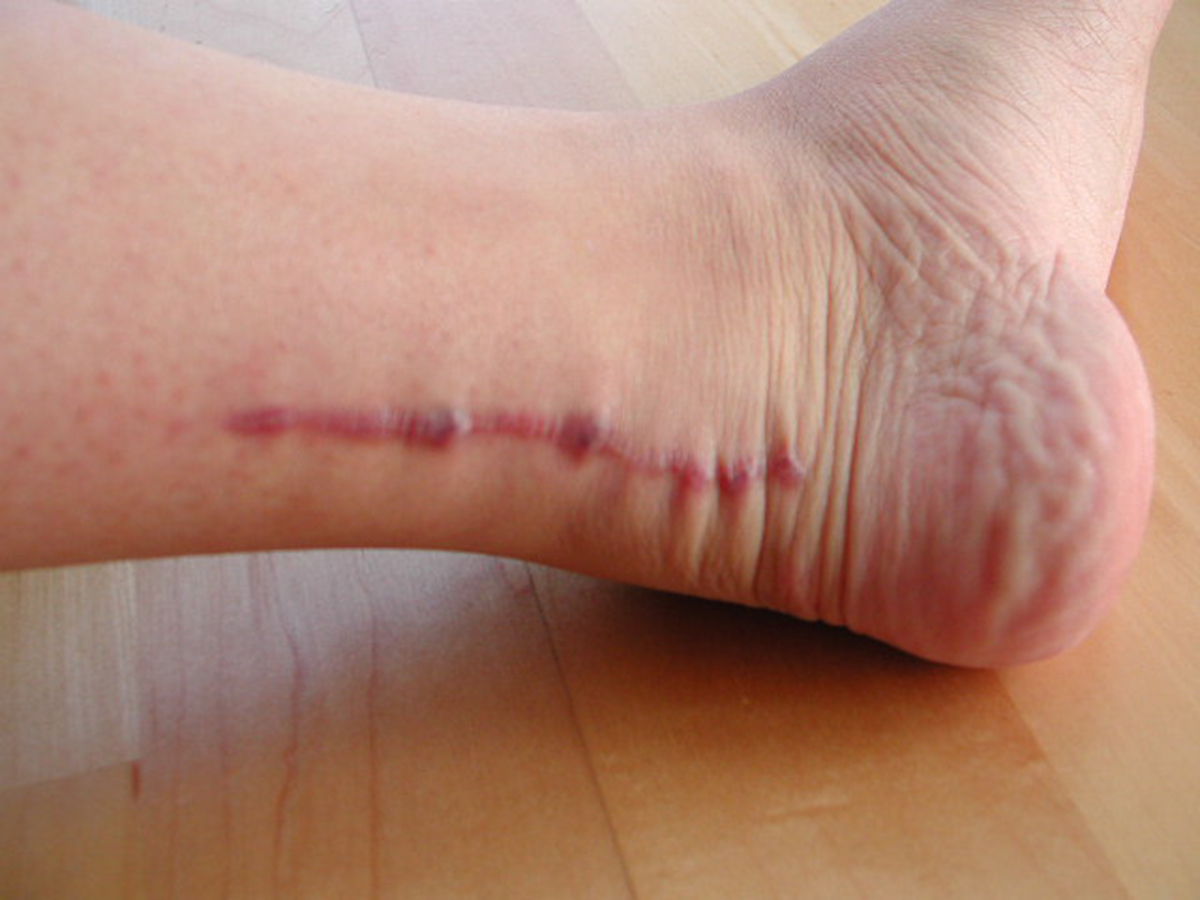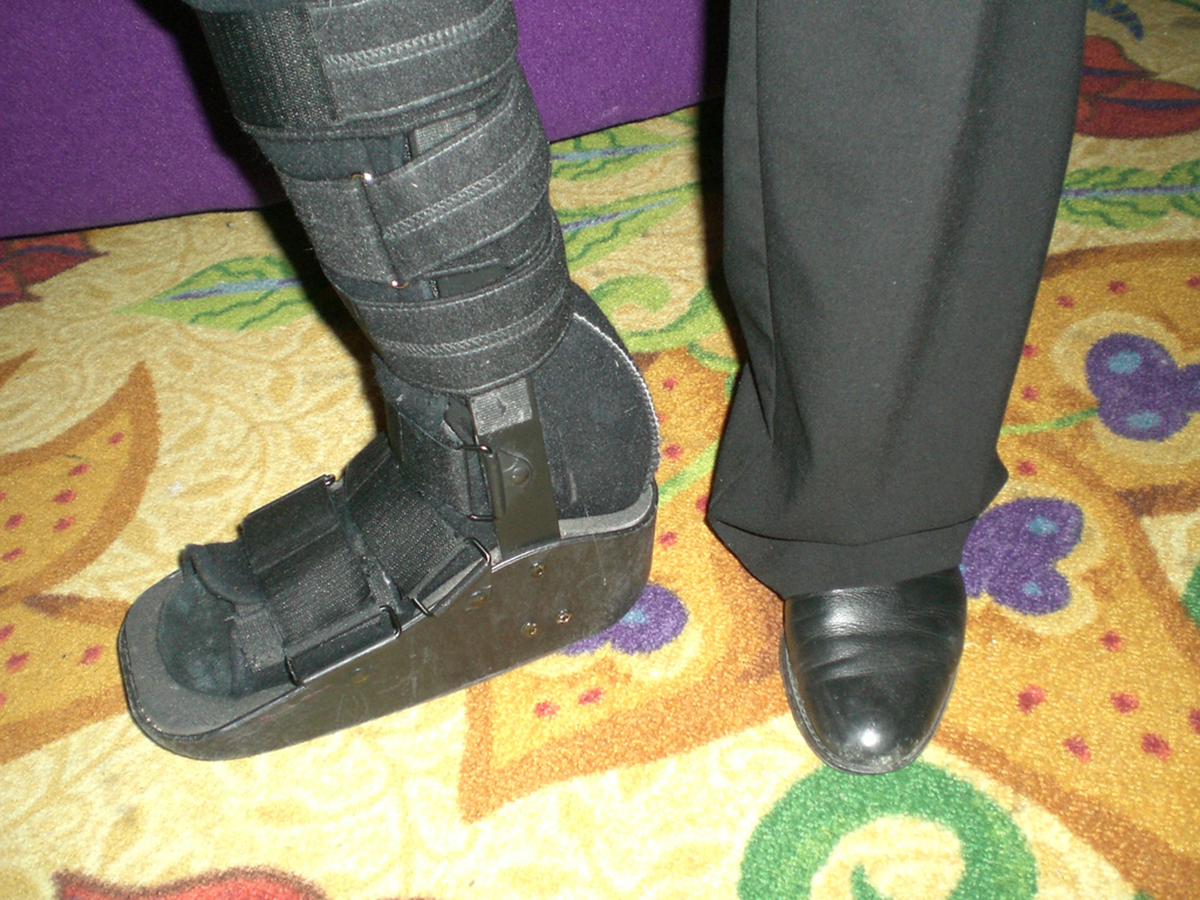What Is A Ruptured Achilles?
The Achilles tendon enables you to stand on your tip toes or point your toes. It connects the calf muscle on the back of the leg to the heel of your foot. The Achilles is able to sustain up to seven times your body weight and when it ruptures, either fully or partially, it is a very severe injury. Sometimes it is allowed to repair conservatively (non-surgically) if there isn't a gap when toes are pointed but leaving it to repair this way has a higher risk of re-rupture. Generally, recovery takes months rather than weeks and there is a chance of re-rupture in the long term. A return to sporting activity is rarely seen before the six-month mark after surgery.

Mobility Exercises To Help You Recover From Your Achilles Surgery
Point And Raise
Laying with your leg fully outstretched, slowly point your toes as far as you can, hold for a second and then try to pull the toes up towards your body, again hold for second and then repeat. Repeat each direction ten times but remember to only go as far as the first point of resistance. The point is not to cause pain.
Rotations
Again with legs outstretched, rotate your big toe in a full circle one way and then back the other way. Remember to rotate the foot slowly and complete 10 full rotations in each direction. Allow a small period of rest between directions and if it is painful then stop.
Inversion/Eversion
In the same position as the above two try to turn your foot so that the base is turning in towards the other foot (inversion). Imagine you are trying to twist the foot around so your little toe is touching the big toe of the opposite, hold and then twist as far as possible in the opposite direction (eversion). This one is a harder mobility exercise as you will need to retrain the brain to send the signal to move the foot in this direction.
Toe Curls
Sitting on the edge of a bed or chair, place your injured foot flat on the floor. When ready, try to curl the big toe as if trying to pick up a marble with your toes. Curl the toes as far as possible, hold for 2-3 seconds and then rest. Repeat this 10 times but do not continue if you are in pain as this uses a lot of the power of the Achilles. You can progress this by actually trying to lift a marble and hold it for a few seconds but only do this if there is no pain.
See Also: Achilles Tendon Rehabilitation Tips and Exercises
Alphabet
This is a great extension mobility exercise once you have mastered the above and there is no pain. Here you need to spell out the alphabet with the big toe as if you were drawing it on a board. Try going through your first name, then last name and gradually work up to being able to complete the full alphabet.
Strengthening Exercises That Promote Recovery After Achilles Surgery
There are a range of strengthening exercises to do when you come out of the cast and they are not just ankle related. You'll have been on crutches for a number of weeks, and you need to build hip, glutes and core strength again as well as building strength in the calf/Achilles.

Core Strength
As part of your rehab plan you need to build in three or four core exercises to be completed once a day. I usually suggest doing these at the beginning of the day along with the other exercises that are completed three times a day. Good options for the core exercises are the air bike (lie on back and pedal in the air), leg lowers (lie down and with feet together, and lower legs until they almost touch the floor and raise again). It is up to you which core exercises you use, but they must be non-weight bearing - so none which you use your feet as a stability point.
Hip Strength
Side leg raises - lay on one side with the lower leg bent and then with the top leg straight raise it up as high as you can and then lower. Complete ten on each leg.
Push downs - lay flat on the bed with your legs straight and knees together, when ready keep toes pointing upwards and push the knees down into the bed, hold for 5 seconds and then rest.
Knee bends - Sit on the bed and place a pillow under the affected leg's knee so that there is a bend. When ready lift the foot up in the air until the leg is straight, hold for 10 seconds and then lower again.
Theraband Exercises
Once you are starting to weight bear on the affected Achilles (with air boot cast) you can start to build up strength in the Achilles itself. Using a theraband is a great way to gradually use the Achilles without risking damaging it further.
Toe points - sit on the bed with legs straight and place the theraband around the affected foot so it runs across the ball of the foot and hold the ends with outstretched arms. When ready try to push the theraband away with your toes trying to point them. Be aware not to hold on too tight and allow the Achilles to partially take the strain to start with.
See Also: There's No Such Thing As Tendonitis
All of the exercises are designed to help aid recovery but you must remember to listen to your body because if there is pain you must not progress onto the next stage. There must be pain free completion of the mobility exercises before you even think about starting theraband exercises because you do not want to risk making it worse and prolonging the recover even more. Also make sure to seek advice from your physical therapist if you are unsure.
- Photo courtesy of Joolie via Flickr: www.flickr.com/photos/joolie/6848033
- Photo courtesy of Joolie via Flickr: www.flickr.com/photos/joolie/6848033
- Photo courtesy of Dana Lookadoo - Yo! Yo! SEO via Flickr: www.flickr.com/photos/pixelposition/5171307660

